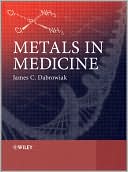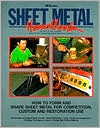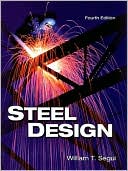Metals in Medicine
Search in google:
In recent years the field of medicinal inorganic chemistry has extended far beyond the traditional areas of platinum anticancer drugs. As metal-based drugs become increasingly common in the drug market, an understanding of medicinal inorganic chemistry is essential for successful drug design and development. Working from basic chemical principles,Metals in Medicine presents a complete and methodical approach to the topic. Introductory chapters discuss important bonding concepts applicable to metallo-drugs and their biological targets, interactions that exist between the agents and substances in the biological milieu, basic pharmacokinetic and pharmacodynamic properties including transport and uptake of drugs by the cells, and methods for measuring efficacy and toxicity of agents. Following this introduction, chapters focus on individual metallo-drugs and agents for treating and detecting disease, examining their synthesis, structure and general properties, known mechanism of action and important physical and chemical principles that apply. Topics covered include: cisplatin and other platinum anticancer drugsruthenium, titanium, and gallium for treating cancergold compounds for treating arthritis, cancer, and other diseasesvanadium, copper, and zinc in medicinemetal complexes for diagnosing diseasethe emerging field of metals in nanomedicine. Throughout the book, Feature Boxes expand on related topics such as drug discovery, synthesis and principles behind medical techniques. Following each chapter there are specifically designed exercises, with solutions, that apply basic kinetic, thermodynamic and chemical principles to practical problem solving in the topic being addressed. Metals in Medicine distils the essence of this important topic for undergraduate and graduate students in chemistry, biochemistry, biology and the related areas of biophysics, pharmacology and bioengineering.
Feature Boxes. Preface. Acknowledgments. 1 Inorganic Chemistry Basics 1.1 Crystal field theory 1.2 Molecular orbital theory 1.3 Absorption spectra of metal complexes 1.4 Magnetic properties of metal complexes 1.5 Reactions of metal complexes 1.6 Bibliography 1.7 References 1.8 Problems 2 Metallo-Drugs and Their Action 2.1 Introduction 2.2 Proteins as Targets for Metallo-Drugs 2.3 DNA as a target for Metallo-Drugs 2.4 Reactions of Metal Complexes in the Biological Milieu. 2.5 Evaluating the Pharmacological Effects of Agents 2.6 From Discovery to the Marketplace and Beyond 2.7 Bibliography 2.8 References 2.9 Problems 3 Cisplatin 3.1 Physical and Chemical Properties of Cisplatin 3.2 Formulation, Administration, and Pharmacokinetics 3.3 Reaction of Cisplatin in Biological Media 3.4 Uptake, Cytotoxicity, and Resistance 3.5 Interaction of Cisplatin with Cellular Targets 3.6 Bibliography 3.7 References 3.8 Problems 4 Platinum Anticancer Drugs 4.1 Carboplatin 4.2 Oxaliplatin 4.3 New Platinum Agents 4.4 Bibliography 4.5 References 4.6 Problems 5 Ruthenium, Titanium, and Gallium for Treating Cancer 5.1 Ruthenium for Treating Cancer 5.2 Titanium Compound for Treating Cancer. 5.3 Gallium for Treating Cancer. 5.4 Bibliography 5.5 References 5.6 Problems 6 Gold Compounds for Treating Arthritis, Cancer, and Other Diseases 6.1 Chemistry of Gold in Biological Media 6.2 Gold Complexes for Treating Cancer 6.3 Gold Complexes for Treating AIDS and Other Diseases 6.4 Bibliography 6.5 References 6.6 Problems 7 Vanadium, Copper, and Zinc in Medicine 7.1 Vanadium for Treating Diabetes 7.2 Copper and Alzheimer’s Disease. 7.3 Copper in Wilson’s and Menkes Diseases. 7.4 Zinc-Bicyclam. A Cytokine Receptor Antagonist 7.5 Bibliography 7.6 References 7.7 Problems 8 Metal Complexes for Diagnosing Disease. 8.1 Technetium-99m in diagnostic nuclear medicine. 8.2 Metal compounds as contrast agents for MRI. 8.3 Radionuclides for palliative care and cancer treatment. 8.4 Bibliography 8.5 References 8.6 Problems. 9 Nanomedicine 9.1 Nanoscience in Treating Disease 9.2 Nanoscience in Diagnosing Disease 9.3 Potential Health Risks of Nanoparticles 9.4 Sources 9.5 Literature Cited 9.6 Problems Index








